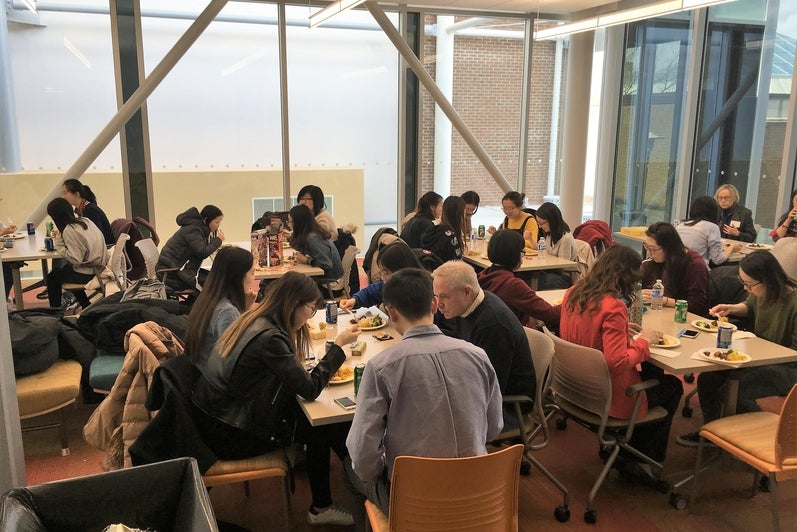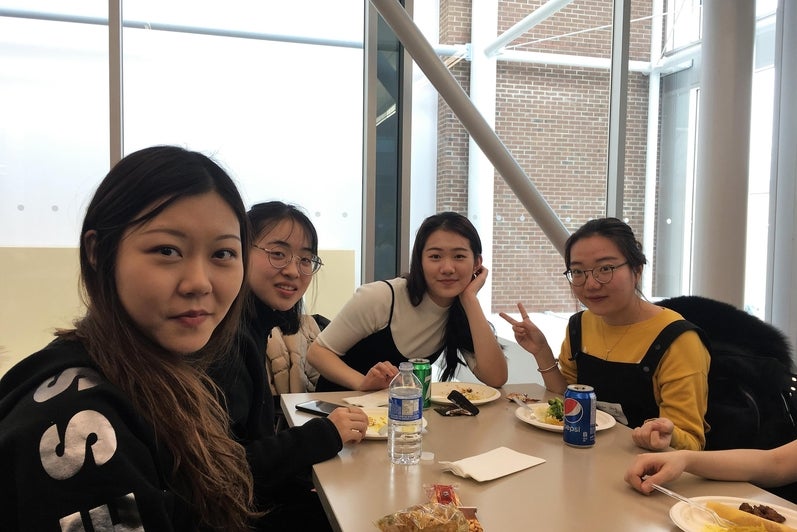
Two universities. Two degrees.
Welcome to the home of the University of Waterloo, Economics 2+2 Program.
Students complete their first two years of study at their home university, and then complete a further two years of study at Waterloo, receiving a degree from each university.
Fall 2025 students: Welcome Event Information
Hear what our current students have to say about academic and student life at UWaterloo in the video below!
Qidi Hu - Alumnus
Honours Economics, 2+2 program, 2016-2018

Recipient of the Governor General's Silver Medal
"The 2+2 program offered by the Waterloo Economics Department provides a wonderful platform for student development. They deliver abundant academic resources that help students find good job opportunities, leveraged by the top ranked reputation of the University. Doing an undergraduate in two different cultural environments expands students horizons, develop their internationalization visions and give students an unforgettable lifetime experience. During the two years in the Economics 2+2 program, students will build a strong foundation in economics and the other fields which students are interested in, and they will also improve their communication skills. This transforms students in to competitive candidates upon graduation." - Qidi Hu
Honours programs
Economics 2+2 students studying in the Faculty of Arts can choose from one of two honours programs. Follow the links below for detailed program requirements.
Communication Skills requirement: (NOTE: this differs from the Calendar copy but in this one case what is written here is the correct requirement and the calendar does not apply): A passing grade (>=50%) in any EMLS course. Ideally in the first fall term at Waterloo. Not later than in the second term at Waterloo. This is a “special rule” for Arts 2+2 students.
Restrictions:
- 2+2 Economics and Mathematical Economics students may not pursue a Joint Honours plan with Mathematics;
- 2+2 Mathematical Economics students may not pursue a Minor in Mathematics.
Applying to the Economics 2+2 Program - Economics or Mathematical Economics
Any questions regarding the Economics program at Waterloo can be forwarded to the Economics Advising Team.
Transfer Credits
All students admitted to Honours Economics and Honours Mathematical Economics will receive 10.0 full units (equal to 20 half units) of transfer credit for previous studies – this is the maximum allowable. That said, students must complete a minimum of 10.0 additional full units (equal to 20 half units) of graded course work at UWaterloo to complete the degree. NOTE: students may elect to take more than 10.0 units of graded course work at UWaterloo if they wish; in fact, in some instances, Honours Mathematical Economics students may need to do just that depending upon the transfer credits they are awarded.
Common transfer credits to be awarded to all students PROVIDED that appropriate equivalent courses are successfully completed at the home institution within the 10.0 full units allowable are as follows (therefore, students will NOT take these courses at UWaterloo) – please be mindful that some of these transfer credits (and others) may not be officially posted until late September after official final transcripts from the home institution are received:
Honours Economics
- ECON: 101, 102, 211 and 221 (2.0 full units – equal to four half units);
Honours Mathematical Economics
- ECON: 101, 102 (1.0 full unit – equal to two half units);
- MATH: 106, 127 and 128 (1.5 full units – equal to three half units);
- STAT: 220 (0.5 unit).
Additional transfer credits will be assigned to “best advantage” each student with meeting major requirements and overall degree requirements; in particular, awarding course equivalents that serve to satisfy some (or all) of the BA Breadth Requirements is a top priority. That said, the ONLY categories of the BA Breadth Requirements a student MIGHT have left to complete are as follows:
- The ONE (1) half unit course in any of the subjects designated as being in the Fine, Performing & Communication category;
- The TWO (2) half unit courses in any of the subjects designated as being in the Languages & Cultures category.
Essentially, depending upon courses completed at the home institution, some students may receive transfer credits that serve to satisfy all the BA Breadth Requirements; some students may need to complete only one more course to satisfy them; some students may need only two more courses to satisfy them; some may need three (which would be the maximum).
IMPORTANT: a great deal of effort is put into assessing transfer credits as accurately as possible with every student’s best interests in mind – therefore, requests to have transfer credits “reassessed” will only be considered in extraordinary circumstances.
ECON 2+2 Course Enrolment Guide
In their first term, all students – Honours Economics and Honours Mathematical Economics – will be enrolled in ECON 290. This will be done by the Economics Department in mid-July prior to newly admitted students being able to start adding courses on their own via the QUEST system in July. Students may NOT drop this course or attempt to switch to a different section. The department will also enroll all students to EMLS 129R, because it is highly recommended that students satisfy the Communication Requirement as soon as possible. It is therefore strongly advised NOT to drop this course. Beginning in July students can begin enrolling in additional courses for their first term of study – students may take a maximum of five half unit courses in a term; to be deemed full-time, a student must take at least three half unit courses in a term.
Instructions on how to add courses on Quest
Students may “Course Select” – ie. Pre-enrol – in the courses they hope to take the Winter term during the course selection period beginning at the end of September. Students are strongly encouraged to participate in “Course Selection” for a future term as it enhances their chances of getting into the courses they hope to take. Students are able to begin finalizing their Winter course selections in November.
Instructions on how to add courses for a future term
Course offering resources
Student resources
| UWaterloo Resource | Purpose |
|---|---|
| Important dates | Find important dates like fee deadlines, university holiday closures, add/drop dates, and more. |
| Undergraduate calendar | Find an outline of your academic plan, degree requirements, course descriptions, and more. |
| Schedule of classes | Find what dates and times courses are being held, how many spaces available in a course. This resource helps with course selection |
| Registrar's Office forms | Find forms needed to change academic plans, change personal information, petition, graduate, and more. |
| Quest | You will use Quest to add/drop courses, view your schedule, view your terms fees, unofficial transcript, and more. |
| LEARN | This is where your instructor can host any online materials for your course, post assignment grades, midterm grades. Learn can also be used to host fully online courses. |
| Student Portal | Find campus events, campus news, personal class schedule, exam schedule, campus maps, and more |















